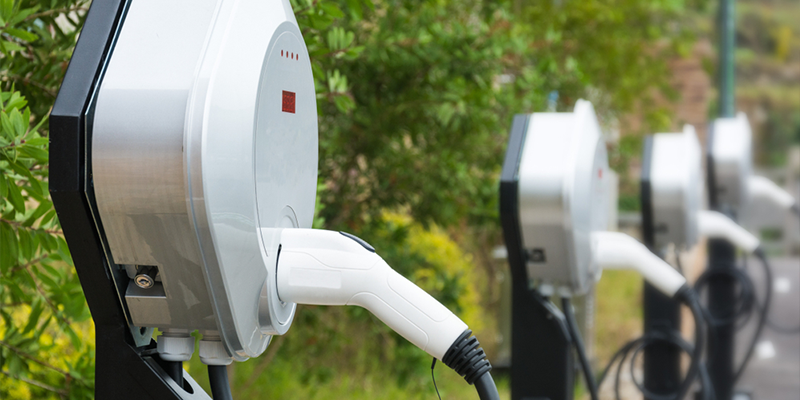
Reduced carbon emissions. Cheaper fuel rates. No-noise vehicles.
Electric vehicles (EVs) are transforming how we commute. All of this is because of their lower operational costs, reduced maintenance requirements, and positive environmental impact compared to their internal combustion engine counterparts.
Most of all, EVs represent progress extending beyond the automotive industry, including renewable energy integration with smart grid systems and energy storage solutions.
Globally, the EV charging market is forecast to experience significant growth shortly. According to market estimates, the global EV charging market will be valued at $190 billion by 2030.
The challenge for EV adoption
Despite encouraging developments, various roadblocks impede the extensive utilisation of electric vehicles in India.
Among the most pressing challenges is the need for an easy and accessible charging infrastructure. According to a Grant Thornton Bharat-FICCI poll, an estimated 400,000 charging stations would be required by 2026 to satisfy the demand for two million electric vehicles on Indian roads.
Nevertheless, the existing number of operational public charging stations in the country is only around 1,700, serving as a major hindrance to the large-scale adoption of EVs.
Most EV charging infrastructure in India involves plug-in charging stations and battery swapping, with the country still waiting to establish its own EV charging standards for high-voltage charging technology.
Hence, for EV owners to experience smooth and efficient charging, India should create charging solutions to suit its needs.
The solution
Integration is essential for the changing demands of smart EVs. An inclusive smart charging solution—developed from the ground up and aligned to the specific needs and conditions of the Indian grid systems—is vital.
Further, a charging infrastructure offering more than basic charging facilities and involves advanced features like grid-friendly charging, load management, and smart metering is also essential.
For the everyday user, this might look like:
- Charging your vehicle at the most opportune times, taking advantage of off-peak hours when electricity demand is lower.
- Setting preferences and schedules to control when the vehicle charges—when renewable energy generation is at its highest such as during sunny hours for solar power.
- Tracking your charging usage, providing detailed information about energy consumption, costs, and charging patterns.
These combined solutions are made to surmount the particular issues arising from the Indian grid conditions, guaranteeing EV owners a consistent and efficient charging experience.
How can this help?
Building an India-specific EV charging and integrated solutions can fortify the Indian EV sector and realise success. These solutions will help bridge the current infrastructure gap and establish a reliable charging station network throughout urban, regional, and rural areas.
Consequently, it will decrease “range anxiety” among potential EV buyers and encourage the widespread adoption of electric vehicles.
Furthermore, integrating advanced technologies in charging infrastructure will optimise the usage of the electrical grid and ensure energy is supplied competently to many EVs.
These can be developed further by employing smart charging solutions to facilitate data capture and leverage the strength of data analytics, artificial intelligence, and the Internet of Things (IoT) to manage the charging process prudently, minimise pressure on the grid, and heighten the overall efficacy of the charging ecosystem.
Policy support
The government’s participation and support are indispensable for the success of India’s EV charging and integrated solutions. Considering EV infrastructure’s relevance, the government has dedicated Rs 10,000 crore under the FAME scheme to advance EV charging infrastructure.
Government initiatives such as incentives under the Faster Adoption and Manufacturing of (Hybrid) and Electric Vehicles (FAME)-II Scheme and tax breaks under state EV policies have further bolstered the appeal of EVs in the country.
The public charging infrastructure in India is projected to expand to 15 million units by 2030, with an estimated 48,000 chargers installed within the next three to four years.
Further, steady policy support, subsidies, and incentives for buyers and charging infrastructure providers are needed to shape a positive setting for the expansion of the EV ecosystem.
Way forward
Electric mobility is an answer to more clean transportation and a way to meet India’s Sustainable Development Goals (SDGs). It can contribute to solving traffic jams, reducing air pollution, and creating sustainable cities.
India-specific EV charging and integrated solutions are the keys to success for green mobility in the country.
By addressing the challenges related to charging infrastructure and leveraging smart technologies, we can drive the adoption of electric vehicles, reduce emissions, and create a sustainable transportation ecosystem that benefits both the environment and the economy.
The time is now to embrace the future of mobility and lead the way towards a greener India.
Akshay Sasikumar is the CEO of 82Volt Technologies
Edited by Suman Singh
(Disclaimer: The views and opinions expressed in this article are those of the author and do not necessarily reflect the views of YourStory.)




![Read more about the article [Funding alert] Swift raises $2.2M in pre-Series A round led by Kalaari Capital](https://blog.digitalsevaa.com/wp-content/uploads/2021/07/Image4wz7-1627279507450-300x150.jpg)





